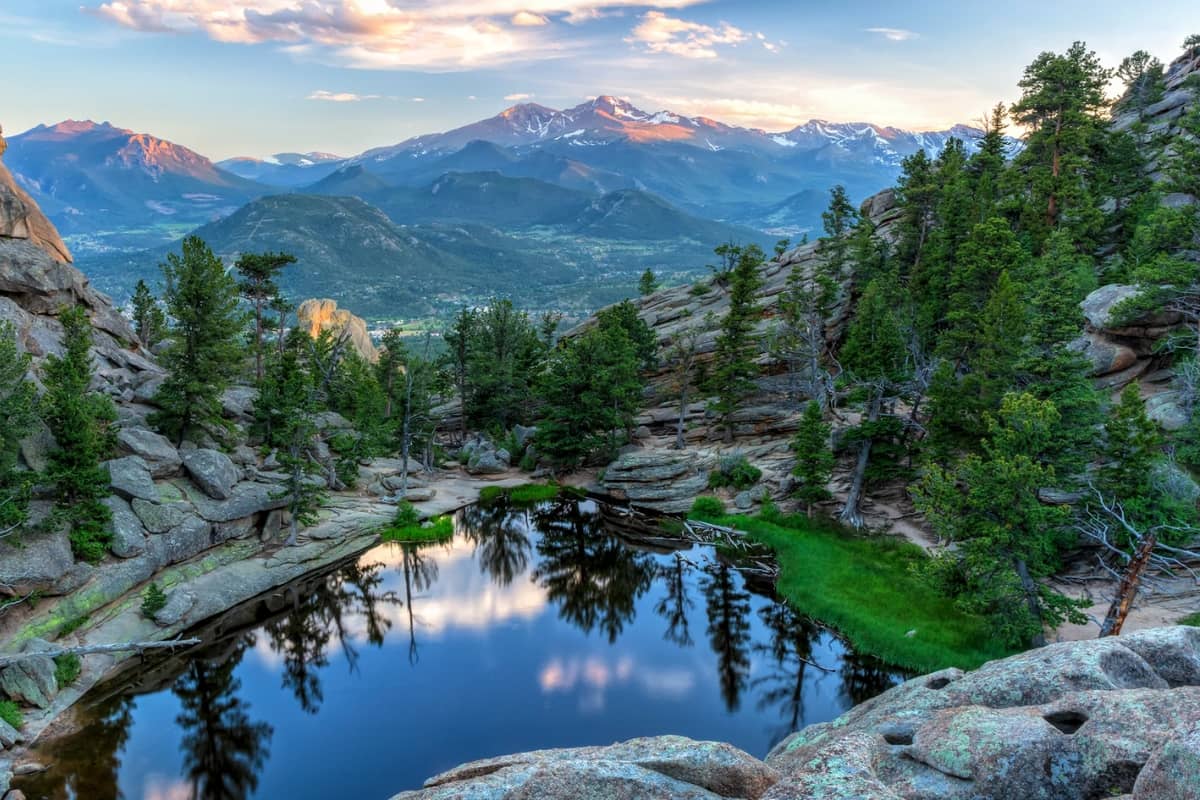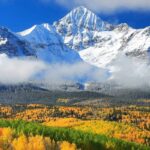Colorado’s Rocky Mountain National Park (RMNP) is one of the most visited national parks in the United States, attracting millions of nature lovers, hikers, and adventure seekers each year. However, the park’s beauty comes with inherent risks. There are many hidden dangers that visitors might not be aware of but must be prepared for when venturing into this rugged, high-altitude environment. Here’s a detailed look at six of the most significant hazards in the park, based on insights from experts and park officials.
Altitude Sickness: A Silent Threat
One of the most significant risks in RMNP is altitude sickness, which can strike anyone, regardless of fitness level. The park’s elevations range from 7,500 feet to over 14,000 feet, with many popular trails and scenic points like Trail Ridge Road and Longs Peak sitting at dizzying heights. High altitude means thinner air, which contains less oxygen, causing symptoms like headaches, dizziness, nausea, and shortness of breath. Severe cases can even lead to life-threatening conditions such as High Altitude Pulmonary Edema (HAPE).
Gradual acclimatization is essential. Spending time at lower elevations before ascending higher altitudes, staying hydrated, and avoiding alcohol or overexertion can help mitigate the effects. It’s also wise to carry over-the-counter medication such as acetazolamide, which can reduce symptoms of altitude sickness.
Wildlife Encounters: Respect the Wild
Rocky Mountain National Park is home to diverse wildlife, including black bears, elk, moose, and mountain lions. While these creatures add to the park’s appeal, encounters can quickly turn dangerous. Black bears, though generally shy, may become aggressive when foraging for food or protecting their cubs. Visitors should never leave food out, use bear-proof containers, and always maintain a safe distance from any wildlife.
Elk and moose, particularly during their mating season or when protecting their young, can become aggressive. Moose, in particular, may charge when threatened, and their size and speed make them especially dangerous. Mountain lions are elusive but pose a threat if approached. In the event of a sighting, it’s essential to stand tall, make noise, and never run, as this can trigger a predatory response.
Avalanches: Winter’s Unpredictable Danger
During the winter months, avalanches pose a significant risk, especially in backcountry areas. These massive snow slides are often triggered by rapid changes in temperature, snowfall, or even the movements of skiers and hikers. Avalanches can happen in a flash, making them one of the most unpredictable hazards in the park.
To stay safe, it’s crucial to be aware of avalanche forecasts and understand the signs of unstable snow conditions. The National Park Service offers avalanche safety training and recommends carrying specialized gear like an avalanche beacon, probe, and shovel when venturing into high-risk areas. Knowing how to use this equipment is just as important as carrying it.
Unpredictable Weather: A Constant Challenge
Weather in RMNP is notoriously unpredictable. Clear blue skies can suddenly transform into thunderstorms, snowstorms, or blizzards, even during the summer months. Lightning strikes are a major concern, especially at higher elevations or above the treeline, where shelter is scarce. In such conditions, hikers should avoid exposed areas and seek lower ground.
Winter brings its own challenges, with heavy snowfalls and freezing temperatures being common. Even during summer, temperatures can drop drastically in high-altitude areas. Layered clothing, waterproof gear, and windproof jackets are essential for anyone venturing into the park, regardless of the season.
Falls on Steep Trails: A Misstep Can Be Fatal
RMNP offers trails for all skill levels, but many of its more challenging routes feature steep, exposed terrain. Trails like the Keyhole Route on Longs Peak are famous for their stunning views, but also for the risk they pose to hikers. Steep drop-offs, loose rocks, and narrow paths increase the chances of falls, which can result in severe injuries or death.
Proper footwear with ankle support, trekking poles, and adhering to marked paths are essential safety measures. Even experienced hikers should assess trail conditions carefully, as weather can make the terrain even more hazardous.
Dehydration and Heat Exhaustion: Don’t Underestimate the Elements
Although RMNP is located at high altitudes, dehydration and heat exhaustion are still common issues, especially during the summer. The combination of physical exertion, dry air, and the park’s intense sunlight can quickly lead to dehydration. Hikers often underestimate how much water they need, which can cause exhaustion, dizziness, and heat-related illnesses.
Visitors should carry sufficient water (at least three liters per person), wear sunscreen, and take regular breaks in shaded areas. Electrolyte drinks can help replenish lost salts and keep energy levels stable. Proper hydration is crucial in avoiding heat exhaustion, which can be life-threatening if not treated promptly.
Conclusion
Rocky Mountain National Park is a place of immense beauty, but it demands respect and preparedness. Each year, the park’s rugged environment claims lives, often due to underestimating the risks associated with high altitude, unpredictable weather, and wildlife encounters. Whether it’s acclimating to the altitude, packing the right gear, or understanding the signs of danger, visitors need to be well-prepared.
A safe trip begins with proper planning—knowing the route, understanding the risks, and carrying the right equipment. It’s essential to listen to park advisories, stay on designated trails, and always be alert to the conditions around you. The wilderness can be unforgiving, but with the right precautions, visitors can enjoy the breathtaking beauty of Rocky Mountain National Park while staying safe from its hidden dangers.
Being aware of these six hidden dangers—altitude sickness, wildlife encounters, avalanches, unpredictable weather, falls on steep trails, and dehydration—can help ensure a memorable and safe adventure in one of America’s most magnificent national parks.






